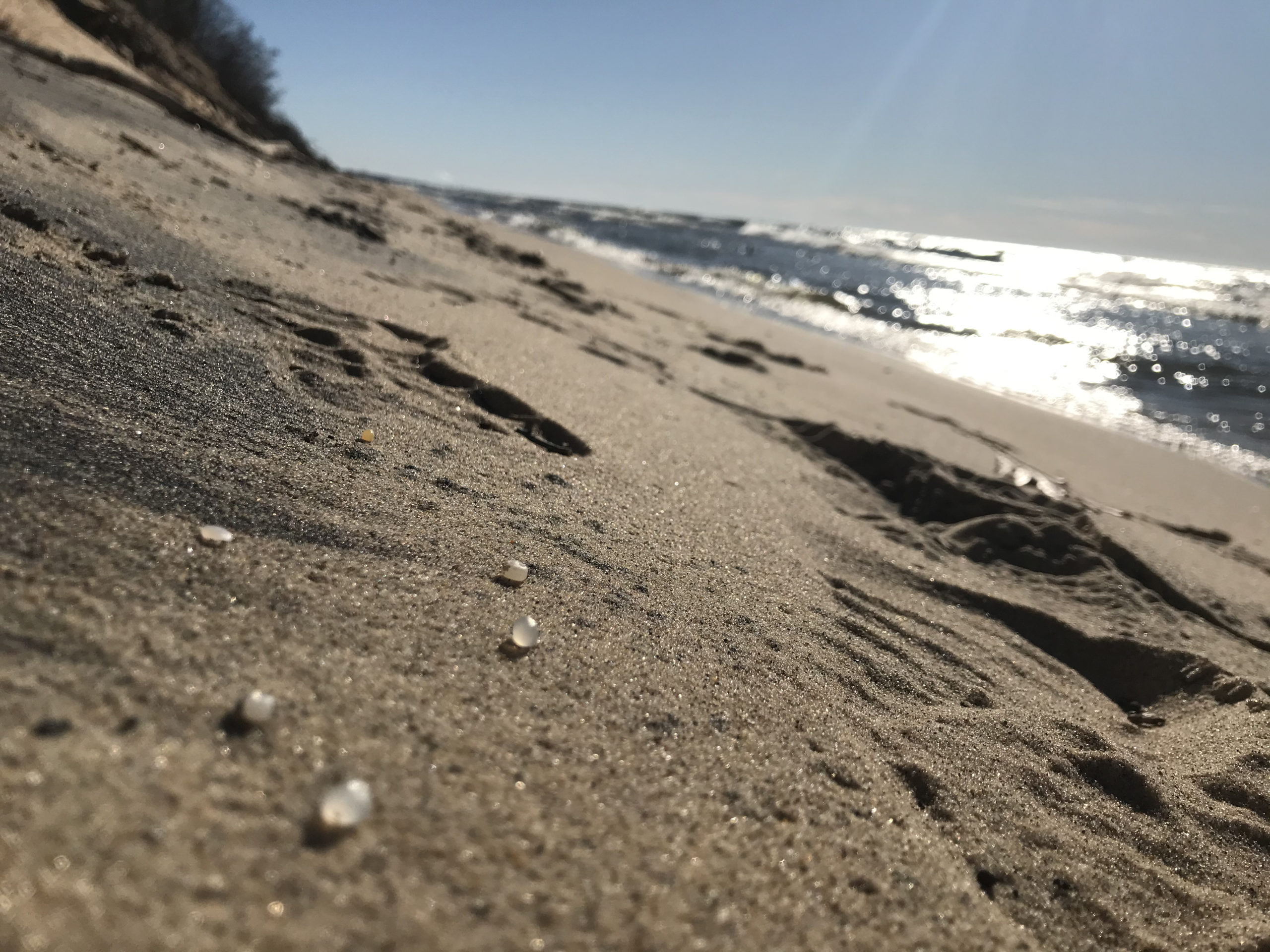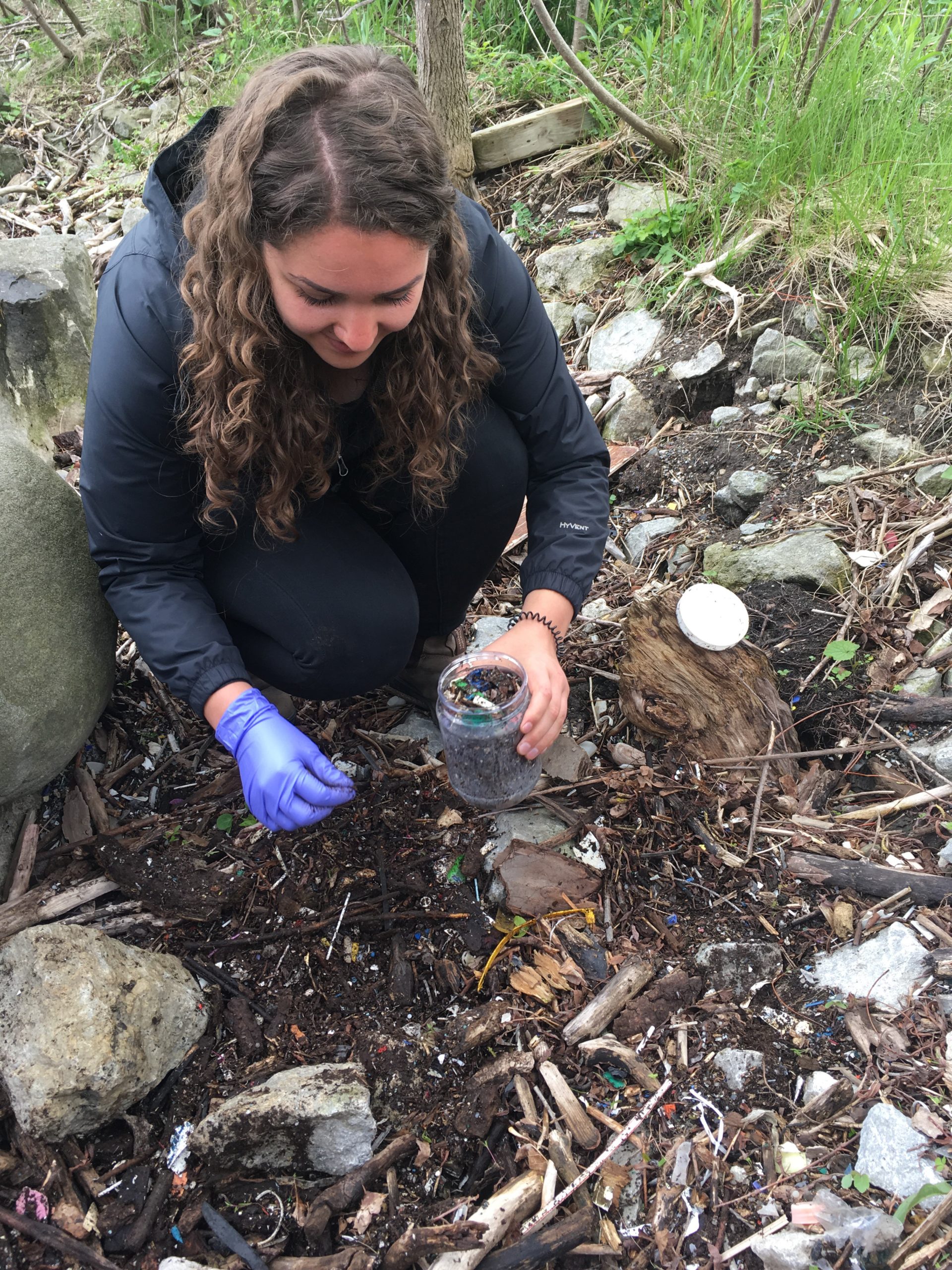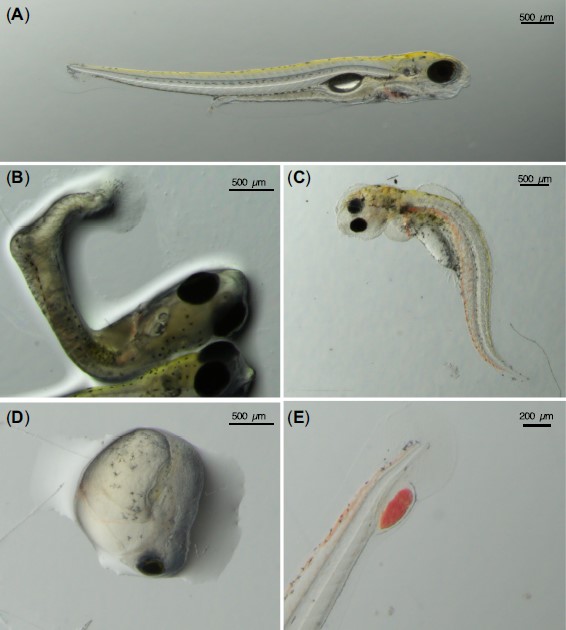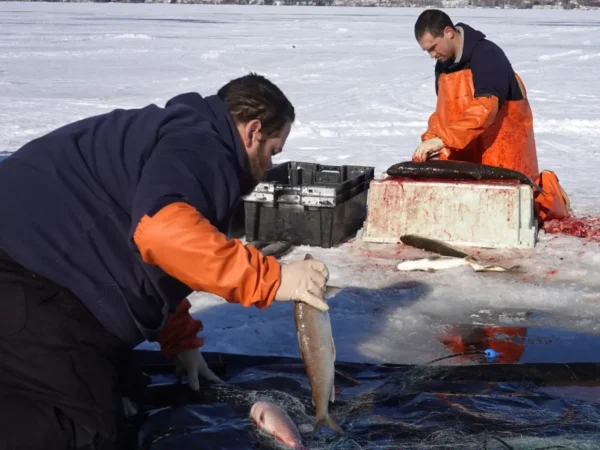
The Great Lakes News Collaborative includes Bridge Michigan; Circle of Blue; Great Lakes Now at Detroit Public Television; and Michigan Radio, Michigan’s NPR News Leader; who work together to bring audiences news and information about the impact of climate change, pollution, and aging infrastructure on the Great Lakes and drinking water. This independent journalism is supported by the Charles Stewart Mott Foundation. Find all the work HERE.
Microplastic pollution has been building up in the Great Lakes for at least four decades, but our understanding of its impact on fish and other aquatic creatures is only just catching up.
Now new research from the University of Toronto shows the harm to wildlife is due to a wide range of factors that is not generally considered in toxicology testing – the plastics’ size, shape and chemical makeup.
In particular, it shows larval fathead minnows exposed to microplastics collected from Lake Ontario developed almost six times more deformities compared to when they were exposed ‘pristine’ pre-consumer microplastics. This suggests microplastics in the lake soak up contaminants in the water and that it is these chemicals that are causing deformities.
The study’s authors argue researchers and policymakers need to stop seeing microplastics as a single contaminant, but rather understand they are multiple contaminants in one tiny package.
Plastic particles are generally considered microplastics when they are 5 millimeters (0.2 inch) or smaller. They are often the result of the breakdown of water bottles, plastic bags or other things that started out larger. Clothing made of fleece or nylon can also shed microplastic fibers when washed, and those go down the drain and into the environment. According to the United States Geological Survey, there are 112,000 particles of microplastics per square mile of Great Lakes water.
Inconsistent testing

PhD student Kennedy Bucci collecting microplastic samples (Photo courtesy of Kennedy Bucci)
Kennedy Bucci, the University of Toronto PhD student who led the study, says the most significant failing of most microplastic testing is that it doesn’t examine the impact of chemicals that hitch a ride on the particles after they end up in the water.
Microplastics act like a chemical sponge, soaking up contaminants such as persistent organic pollutants and heavy metals. For example, researchers have found pesticides and other toxic compounds in plastics floating in water, and those plastics have in turn been found in the bellies of fish in the Great Lakes.
“But most lab testing is done with pre-consumer microplastics,” said Bucci. “They’re easy to buy – they come in the mail.”
These pre-consumer microplastics are usually polyethylene or polypropylene and are used to make products such as shopping bags, food wrap, detergent bottles and even auto parts. While lab testing of pre-consumer microplastics has helped raise flags, results have offered conflicting evidence. Some show harmful effects to fish – liver stress, changes to gene expression and decreased metabolism – while others show no effect.
“The inconsistencies between studies in terms of whether or not an effect is detected are likely the consequence of ignoring the complexity and context of microplastics as an environmental contaminant,” Bucci and her fellow authors stated.
Zeroing in on an important prey species
Their research focussed on larval fathead minnows, a significant prey species in North American rivers and lakes, including the Great Lakes. They exposed the larvae to pre-consumer microplastics and microplastics that Bucci collected from Toronto’s Lake Ontario shoreline, near the Humber River.
Before exposing the larvae, she put both types of plastic through a coffee grinder so the team could compare the effects of particles of the same shape and size.
Previous research has shown that the more jagged the shape of a microplastic, the more damage it does to the digestive tract of fish and other creatures. The same goes for size – the smaller the particle, the better able it’s able to slip out of the digestive tract and into the body, where it can irritate internal organs and cause harmful inflammation.
After grinding the particles to a uniform size and shape, Bucci exposed the larvae to different treatments – pre-consumer polyethylene and polypropylene microplastics, and microplastics made of the same mix of material but sourced from Lake Ontario.
She also exposed some larvae to water in which each type of microplastic had soaked for 24 hours but from which the particles had been removed. This allowed Bucci to tease out the effect of the particles themselves from the chemical soup they leached out.
After 14 days, she examined the larvae for visible deformities. Environmental microplastics caused almost six times more deformities than the pre-consumer microplastics. The deformities included scoliosis of the spine, edema (fluid buildup around the eyes, heart or yolk sac), failure to hatch and truncated tails.

Types of deformities compared to a normal larval fathead minnow (A). Fish pictured in Figure 1 are exhibiting scoliosis and tail
truncation (B); edemas around the eyes, yolk sac, and heart (C); failure to hatch (D); and other (E). (Image from Impacts to larval fathead minnows vary between preconsumer and environmental microplastics, Kennedy Bucci, Environmental Toxicology & Chemistry, Copyright © 2021, copyright owner as specified in Environmental Toxicology & Chemistry, Wiley)
“Although pre-consumer microplastics caused effects only when organisms were exposed to both the particles and the chemical leachates, the environmental microplastics caused effects when organisms were exposed to the chemical leachates alone, suggesting that the mechanism of effects are context‐dependent,” the authors write.
In other words, the microplastics collected from Lake Ontario likely soaked up contaminants from the water, and it was these contaminants that caused the deformities. Bucci did not test the Lake Ontario microplastics to see what chemicals they contained, in part because it would have been difficult to untangle which chemical was responsible for which deformity.
Susanne Brander, an ecotoxicologist at Oregon State University, said the study was well-designed and its conclusion about treating microplastics as multiple stressors “is absolutely a perfect argument to be making.”
“It’s something people have been saying for years in marine ecosystems, which is where microplastics were first seen and studied,” she said. “This complicates the way we think about microplastics, but it’s an important complication.”
Catch more news on Great Lakes Now:
Water Access: As moratoria on shutoffs end, old problems return to the forefront
Flooding Tells ‘Two Different Stories’ In Michigan
Chemical Hitchhikers: Great Lakes microplastics may increase risk of PFAS contaminants in food web
API key not valid. Please pass a valid API key.Featured image: Nurdles are scattered on the Lake Michigan shoreline near Muskegon. The small plastic pellets, which are melted down to produce plastic products, are a common type of microplastic. (Bridge photo by Kelly House)





